Alix Hawley's Blog, page 16
February 3, 2015
Another Me
Toronto is my life in a parallel universe. Hotel room to myself, lots of events, meeting other writers and editors, uh, drinks . . ..
I just had lunch with Anne Collins, my editor, Amanda Lewis from Random House Canada, and Lynn Henry from Knopf Canada. It featured an abundance of kale, and a set of tiny desserts on a platter, which hit me straight in the heart. The rustic wood platter looked like it could have been out of one of Daniel Boone's cabins, too.
Even better than dessert was the talk about the difference between writing and editing. Two different skills, and it's rare to be accomplished at both. We discussed how editors can see what the writer is trying to make, often before the writer herself can--editors are able to look through the weeds, as Anne put it, to the shape of the thing itself, rusty and hidden as it may be. We went on to talk about the way some authors need to see the story before they begin (these are the people who map things out on the wall with post-its), and some need to write out a big mess before they can see the story (that's me).
I feel unbelievably lucky to have had such generous help with my book--Anne for all her careful work on the drafts, Amanda for picking it out of the pile in the first place, my agent Denise Bukowski for her belief, and now Lynn for her insights. This isn't just the BC wine talking. Cheers.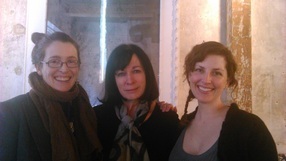 Amanda, Anne, and me after lunch
Amanda, Anne, and me after lunch
I just had lunch with Anne Collins, my editor, Amanda Lewis from Random House Canada, and Lynn Henry from Knopf Canada. It featured an abundance of kale, and a set of tiny desserts on a platter, which hit me straight in the heart. The rustic wood platter looked like it could have been out of one of Daniel Boone's cabins, too.
Even better than dessert was the talk about the difference between writing and editing. Two different skills, and it's rare to be accomplished at both. We discussed how editors can see what the writer is trying to make, often before the writer herself can--editors are able to look through the weeds, as Anne put it, to the shape of the thing itself, rusty and hidden as it may be. We went on to talk about the way some authors need to see the story before they begin (these are the people who map things out on the wall with post-its), and some need to write out a big mess before they can see the story (that's me).
I feel unbelievably lucky to have had such generous help with my book--Anne for all her careful work on the drafts, Amanda for picking it out of the pile in the first place, my agent Denise Bukowski for her belief, and now Lynn for her insights. This isn't just the BC wine talking. Cheers.
 Amanda, Anne, and me after lunch
Amanda, Anne, and me after lunch
Published on February 03, 2015 11:42
February 2, 2015
Nerve Tonics
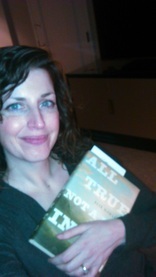 Post-reading. Post-drink. I've just finished reading part of All True at the Toronto Public Library's Eh List evening. A sexy part! My editor suggested I read a section from Daniel's teenage courtship of his eventual wife, Rebecca. If the ed. wants romance, romance she shall have. Reading aloud, it was fun for me to hear Daniel's voice at this point--though through my own voice--as I've never read this chapter out before. I can hear his turns of speech, his rhythms, so it came out pretty readily. Relief.
Post-reading. Post-drink. I've just finished reading part of All True at the Toronto Public Library's Eh List evening. A sexy part! My editor suggested I read a section from Daniel's teenage courtship of his eventual wife, Rebecca. If the ed. wants romance, romance she shall have. Reading aloud, it was fun for me to hear Daniel's voice at this point--though through my own voice--as I've never read this chapter out before. I can hear his turns of speech, his rhythms, so it came out pretty readily. Relief.The room was icy, but 400 intrepid people turned out on the slushy evening, and I didn't have much time to sit and think, so the nerves didn't have a chance to jangle too badly. I was lucky to be up first, as I then got to sit back and listen to Miriam Toews discuss her books and life. She is a generous writer who radiates calm energy from the stage. And so beautiful.
And then my charming publicist and I went out for dinner and mojitos, and the rest is silence. Mostly because it's a little blurry.
Published on February 02, 2015 19:34
Elevator Music - YES
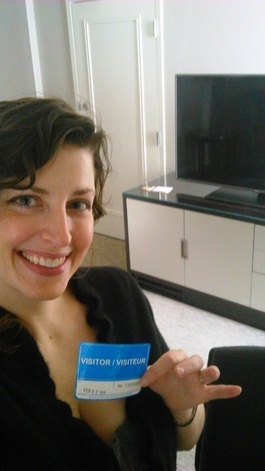 With my CBC pass! This morning, after we had a hushed talk about explaining the facts of life to children, Lindsay, Katie, and Ashley from Random House turned to a more prosaic topic: #TorontoSnow, the handle the weather here has earned. It's snowy, all right, so it's fair, if not so literary.
With my CBC pass! This morning, after we had a hushed talk about explaining the facts of life to children, Lindsay, Katie, and Ashley from Random House turned to a more prosaic topic: #TorontoSnow, the handle the weather here has earned. It's snowy, all right, so it's fair, if not so literary. We've had a couple of ice-capades-esque taxi rides. The delightful Ashley and I swerved our way in one to the CBC building after breakfast. It's an enormous, hive-like place. After we trudged through the foot of snow in the gutter and made it inside, I got a little lost on the way to the studio, as well as a little fangirlish. Leonard Cohen's "First We Take Manhattan" was playing in the elevator. Ashley casually mentioned she'd been with Leonard himself in that very elevator. I SHARE A PUBLICIST WITH LEONARD COHEN.
I sat at a desk in a quiet room, put on the headphones, and spoke with Chris DiRaddo, who is in Montreal, about how I wrote my book. It reminded me why I love radio: the intimacy of the voice, the feeling of eavesdropping on a conversation. A clip will be on The Next Chapter sometime soon.
Published on February 02, 2015 09:18
February 1, 2015
Snow is General
It's snowing like mad here in Toronto, obliterating the sky, and the wind is vicious. It's lovely to see brick and stone buildings, though. And thanks to my agent, Denise Bukowski, I had a delightful dinner with Wayson Choy, Robert McGill, and Kathryn Kuitenbrouwer. Discussion of old and new lives, books, writing, teaching, and nicknames. Looking forward to more discussion for a CBC Radio interview tomorrow, and reading at Miriam Toews's event in the evening. I hope it keeps snowing.
Published on February 01, 2015 20:42
January 31, 2015
Book Tour
I leave tomorrow morning for Toronto, the start of my little book tour. I'm so thrilled to be reading with Miriam Toews on Monday! I'll let you know how it's going out there.
Published on January 31, 2015 19:39
January 24, 2015
Kiss Me, and You Will See How Important I am
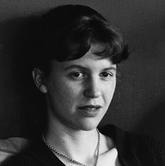 Sylvia Plath, 1932-63. Image courtesy of poets.org. The above is from Sylvia Plath's journals. I've been rereading some of them lately, with the unease that always swims up. It's especially strong with Plath - I never feel quite so intent or so queasy when reading Virginia Woolf's diaries, say, or Mary Wollstonecraft's love letters. It's the voyeurism that does it, of course. But it's something else too.
Sylvia Plath, 1932-63. Image courtesy of poets.org. The above is from Sylvia Plath's journals. I've been rereading some of them lately, with the unease that always swims up. It's especially strong with Plath - I never feel quite so intent or so queasy when reading Virginia Woolf's diaries, say, or Mary Wollstonecraft's love letters. It's the voyeurism that does it, of course. But it's something else too.Plath's best poems give me a similar feeling. The more I think about it, the more I realize it comes from an assumption built into her writing - the assumption that the reader is with the speaker, on the speaker's side. *Is* the speaker, in fact. It's the root of the uncanniness of her work, I think. The poems often address someone directly - "Daddy," for instance - but they also address a reader, whether overtly or subtly. Plath knows and accepts that she is being read. In "Tulips,"she writes,
"Nobody watched me before, now I am watched."
A few lines later, she suddenly tells us,
"I see myself[.]"
Here's the trick: she has turned herself into the onlooker, and, at the same time, turned the onlooker into her. Not many writers can pull this off. Most want readers to understand what they describe, but Plath simply assumes they have slipped into her clothing and flesh, and are not just watching her, but also speaking her voice alongside her (the poem ends with an image of a mouth). Plath's journals were private, but even here we can feel a reader built in, and that reader mouths everything Plath says.
It makes me think about writing the voices of the dead, real and otherwise. Historical writers have to do it. And we have to assume we have it right, that the actual person would have spoken in the voice we give them, if not always in so many words. I think we often feel the dead looking over our shoulders.
For a long time I felt uneasy about resurrecting Daniel Boone and his family and others. I felt uneasy about giving them voices, especially when so little of their own remains. And I think the only thing to be done about this unease is to try Plath's magic - to feel the dead characters watch us even as we try to inflate them with life. To watch and be watched at once. To be two sets of eyes and two mouths, theirs and ours, at once.
Published on January 24, 2015 20:42
January 18, 2015
Where's Daniel?
 Holding this hardcover copy of my new book is strange and lovely. The novel has been out of my hands for a while now, since the substantive edit, copy edit, and final proofreading rounds finished a few months ago. It feels good to have it back, and to think that you'll be able to read it so soon.
Holding this hardcover copy of my new book is strange and lovely. The novel has been out of my hands for a while now, since the substantive edit, copy edit, and final proofreading rounds finished a few months ago. It feels good to have it back, and to think that you'll be able to read it so soon.I love the beautiful cover design, and feel awfully smug for someone who had nothing to do with it. Asher Brown Durand's crackled landscape painting of the Adirondacks dates to 1878. My mum insists she can see a small human figure in it. See what you think.
Published on January 18, 2015 19:07
January 11, 2015
Missing Pictures
A few people have asked about images of Daniel Boone.. There are no photographs, which isn't surprising, given that he lived from 1734 to 1820. It's somehow permanently disappointing to me, though. The one portrait painted from life, by Chester Harding, was done in Boone's last year. People who knew him described him as about 5'8", "pony-built" and muscular. Some accounts have his hair as sandy, some as dark. His face seems to have been strong-boned, and his eyes were blue.
As I was writing, I wished more than once for a photo, which I always find a catalyst for writing. I didn't have a powerful visual image of him in my mind at first. I found myself wishing even harder for images of his wife, Rebecca, and his parents and children, who are all somewhat shadowy in the historical record. They eventually took shape for me with only a few throwaway descriptions to go on--Rebecca was black-haired and more than commonly tall, for instance.
Looking at photos of Victorian descendants, all lined up with their many children, was helpful. And a photograph of Boone's last son, Nathan, exists. He's supposed to have looked like his father. It's strange to look at his face, and to see how his eyes slide away from the viewer, refusing to be seen quite head-on.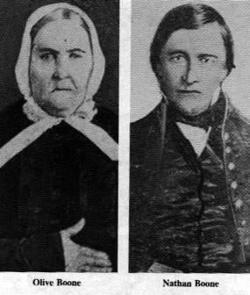 Nathan Boone and his wife, Olive Vanbibber Boone. Both deserve novels of their own.
Nathan Boone and his wife, Olive Vanbibber Boone. Both deserve novels of their own.
As I was writing, I wished more than once for a photo, which I always find a catalyst for writing. I didn't have a powerful visual image of him in my mind at first. I found myself wishing even harder for images of his wife, Rebecca, and his parents and children, who are all somewhat shadowy in the historical record. They eventually took shape for me with only a few throwaway descriptions to go on--Rebecca was black-haired and more than commonly tall, for instance.
Looking at photos of Victorian descendants, all lined up with their many children, was helpful. And a photograph of Boone's last son, Nathan, exists. He's supposed to have looked like his father. It's strange to look at his face, and to see how his eyes slide away from the viewer, refusing to be seen quite head-on.
 Nathan Boone and his wife, Olive Vanbibber Boone. Both deserve novels of their own.
Nathan Boone and his wife, Olive Vanbibber Boone. Both deserve novels of their own.
Published on January 11, 2015 19:54
January 6, 2015
Wild Frontier Lite
 We're digging out from the heaviest snowfall in thirty years. Schools are closed, we've had no mail for two days, almost nobody is on the roads. I haven't had the guts to venture out for groceries. My kids keep ending up stranded face-down and sunk in the drifted-up yard. We keep shovelling, but there's nowhere to put any more snow. All of which reminds me that I would have lasted about three minutes on the frontier.
We're digging out from the heaviest snowfall in thirty years. Schools are closed, we've had no mail for two days, almost nobody is on the roads. I haven't had the guts to venture out for groceries. My kids keep ending up stranded face-down and sunk in the drifted-up yard. We keep shovelling, but there's nowhere to put any more snow. All of which reminds me that I would have lasted about three minutes on the frontier.Life was constantly intense for settlers, and not just in the winter. For clothing and bedlinen, most families had to produce their own yarn from flax or wool, spinning and winding it in their spare time (!), then weaving and sewing. Little girls would run around weaving narrow "tapes" to hold up garters and such. No idle hands.
First Nations and white hunters killed deer for hides as well as meat, skinning, scraping, and treating the leather to trade or make into hunting shirts. In the Kentucky frontier forts, white settlers began to run out of clothes, and went around half-naked or contrived outfits from blankets or roughly woven buffalo hair. Nothing simple.
On the frontier, bear meat was seen as the best eating, but deer, elk, and turkey were staples too. As settlers moved west, they enjoyed the fried tails of the beavers they trapped for fur to trade, and learned that buffalo hump and tongue were the choice cuts. You had to catch one first, though. And to grow food, you had to clear the trees, stumps, and rocks, plow the soil, plant your corn and vegetables and fruit trees, as well as hay for your livestock, and harvest and store it. And start all over again after the soil was exhausted in a few years.
So it's wild frontier lite at my snowbound house today. I'm going to make some killer chocolate cookies and really, really appreciate them.
Published on January 06, 2015 13:23
January 3, 2015
Camping Out in Book Trailer Park
Hey, I made a book trailer to go with the song The Old Familiar and Tariq wrote for the book (see last post). A cinematographer I'm not, but I hope you'll enjoy seeing some Boone- and book-related images to go with the haunting music.
Published on January 03, 2015 20:40



